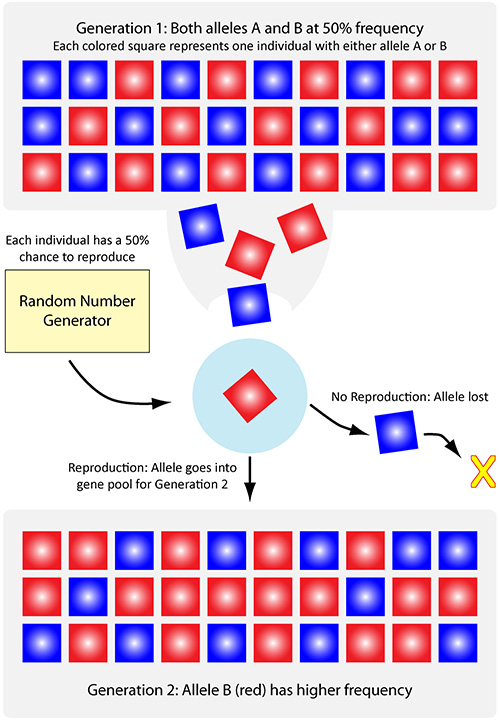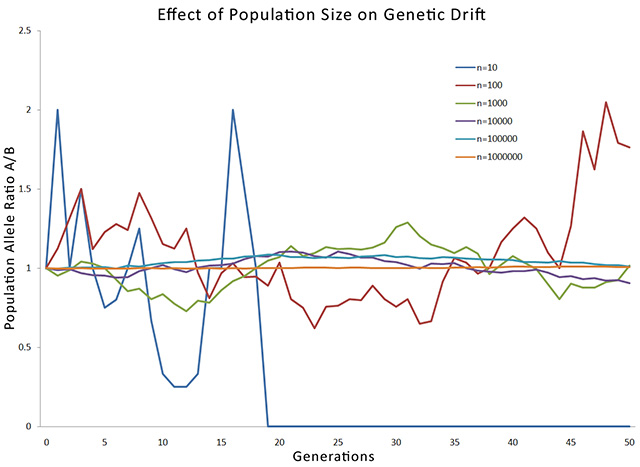Stellarium
I recently started using Stellarium (a free planetarium program). The documentation is somewhat lacking and I had to spend some time figuring out how to do certain things. I’m posting instructions here, in case anyone else has trouble with this stuff.
How to Identify Stars
Stellarium comes with a pre-packaged database of stars, and more catalogs can be downloaded from within the program. If you download all catalogs, you should have stars down to magnitude 18.0 in your Stellarium database. Unfortunately, the vast majority of them will be unlabeled, since Stellarium has labels only from the HIP catalog and a few thousand from the GCVS catalog. So if you click on some random star in Stellarium, chances are you will see no label, just the generic identifier “star” followed by its magnitude and coordinates. Here’s an example:
I clicked the star with the crosshairs on it, between the two labeled stars Mizar and Alcor. Notice that only those two stars are labeled. Clicking the star produces some information about it on the top left of the screen, but there is no label, just the generic “star” designation. So how do we find out which star this is?
First, we need to confirm that Stellarium indeed does not have the label for this star. We already know that because the information at the top left of the screen does not show a label, but just to be sure, do the following:

Move the cursor to the left edge of the Stellarium window to open the left menu, and select “Sky and Viewing Options Menu” (or just press F4). In the “Sky” tab, look under the second column for “Labels and Markers”. Make sure that the radio box next to “Stars” is checked, and the slider next to it is dragged all the way to the right.
In the example above, we have already done that, but in this field only two stars have labels and the selected star is not labeled. So we’ll need to look it up on the web, in the SIMBAD database.
Open a web browser and go to the SIMBAD site, then choose “Query by coordinates” to get this page. Now we need to enter coordinates for the selected star from Stellarium into this query page.
You can just read off the coordinates from Stellarium, but I prefer to do the following. While you have the star selected in Stellarium, press CTRL-C to copy that star’s information to the clipboard, then paste it into a text editor. For the star selected above, it looks like this:
Type: star Magnitude: 7.55
Color Index (B-V): 0.26
RA/DE (J2000): 13h24m51.8s/+54°53’50.8″
RA/DE (of date): 13h25m27s/+54°49’19”
Galactic longitude/latitude: +112°49’19.2″/+61°34’11.4″
Hour angle/DE: 20h12m32s/+54°49’19”
Az/Alt: +50°27’16″/+51°16’15”
Ecliptic Topocentric (of J2000): +166°07’06.3″/+56°26’55.2″
Ecliptic Topocentric (of date): +166°07’16.3″/+56°26’56.8″
We’re interested in the RA/DE (J2000) coordinates. I wrote a blurb about astronomical coordinates, which you can look up here if you want to know what RA/DE (J2000) means. We need to format this for the SIMBAD query, which is done by simply removing the h/m/s (hour/minute/second) and degree/minute/second marks, leaving just the numbers and the signs, like so:
13 24 51.8 +54 53 50.8
The first three numbers are the RA, the next three are the DE. There must be a sign (+ or -) before the DE. Now copy and paste this into the SIMBAD query box. Under “define the input” below the query box, select ICRS from the drop down list. Epoch and Equinox do not need to be changed. The only other thing you might want to change is the “define a radius”. This means the angular radius around the specified coordinates that SIMBAD will search. The default value is 2 arc minutes, but if you’re searching a crowded part of the sky, this may be overly broad and might turn up a whole list of hits instead of just the one star you are interested in. I usually change this to 5 arc seconds. Now click “Submit query”. You’ll see something like this:

This is the star we’re interested in. It happens to have a name, Stella Ludoviciana, or Ludwig’s Star. SIMBAD lists 12 identifiers. For looking it up elsewhere, the HD and Tycho ones are most useful, in this case HD 116798 or TYC 3850-257-1. The “Plots and Images” section has a lot of information about the star, including dozens of photographs at different wavelengths from various sky surveys. It’s well worth exploring.
